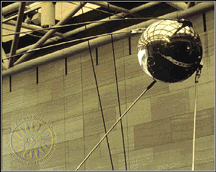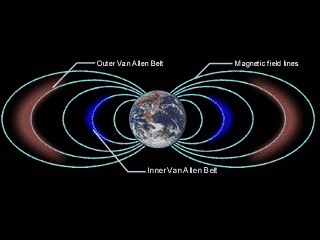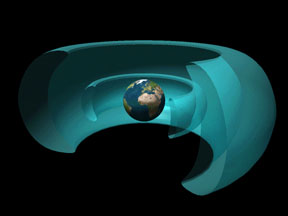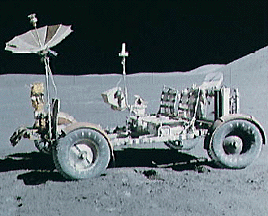Image of Explorer 1 spacecraft.
NASA/JPL
Explorer
Explorer 1, launched on Jan. 31, 1958, was the first U.S. satellite to orbit the Earth. Its successful flight made the United States the second nation in space, following the Soviets who had launched Sputnik 1 just four months earlier.
Explorer 1 carried several scientific instruments which measured space temperature and the dangers of small meteorites. Its major accomplishment was the discovery of an area of radiation which surrounds the Earth.
Between 1958 and 1981 there were 56 more Explorer spacecrafts to reach space. Each was small, relatively inexpensive, and carried out a variety of scientfific missions.
You might also be interested in:

The Soviet Sputnik program consisted of four satellites, three of which reached Earth orbit. Sputnik 1, launched on Oct.4, 1957, became the first artificial satellite to successfully orbit the Earth. It
...more
In 1957, Russia launched Sputnik 1, the first spacecraft to ever be launched. Americans wanted to send up a satellite too. They sent up Explorer I. Even though this was America's first satellite, Explorer
...more
You may have seen a spider web catch bugs in it. Well, the Earth's magnetic field is kind of like a spider's web. It catches particles (protons and electrons) in it. The Earth's magnetic field catches
...more
The Hubble Space Telescope (HST) is really neat! It was first launched in 1990, but scientists started building it in the 1970's! We have found all kinds of objects like stars, nebulae and galaxies. The
...more
Apollo 11 was the first mission that landed a person on the moon. On July 16, 1969, the U. S. rocket Saturn 5 was launched carrying the lunar landing module Eagle. The Eagle was released and it reached
...more
Apollo 12 was launched on Nov. 14, 1969 and arrived at the Moon three days later. Astronauts Charles Conrad and Alan Bean descended to its surface, while Richard Gordon remained in lunar orbit aboard the
...more
Apollo 15 marked the start of a new series of missions from the Apollo space program, each capable of exploring more lunar terrain than ever before. Launched on July 26, 1971, Apollo 15 reached the Moon
...more















